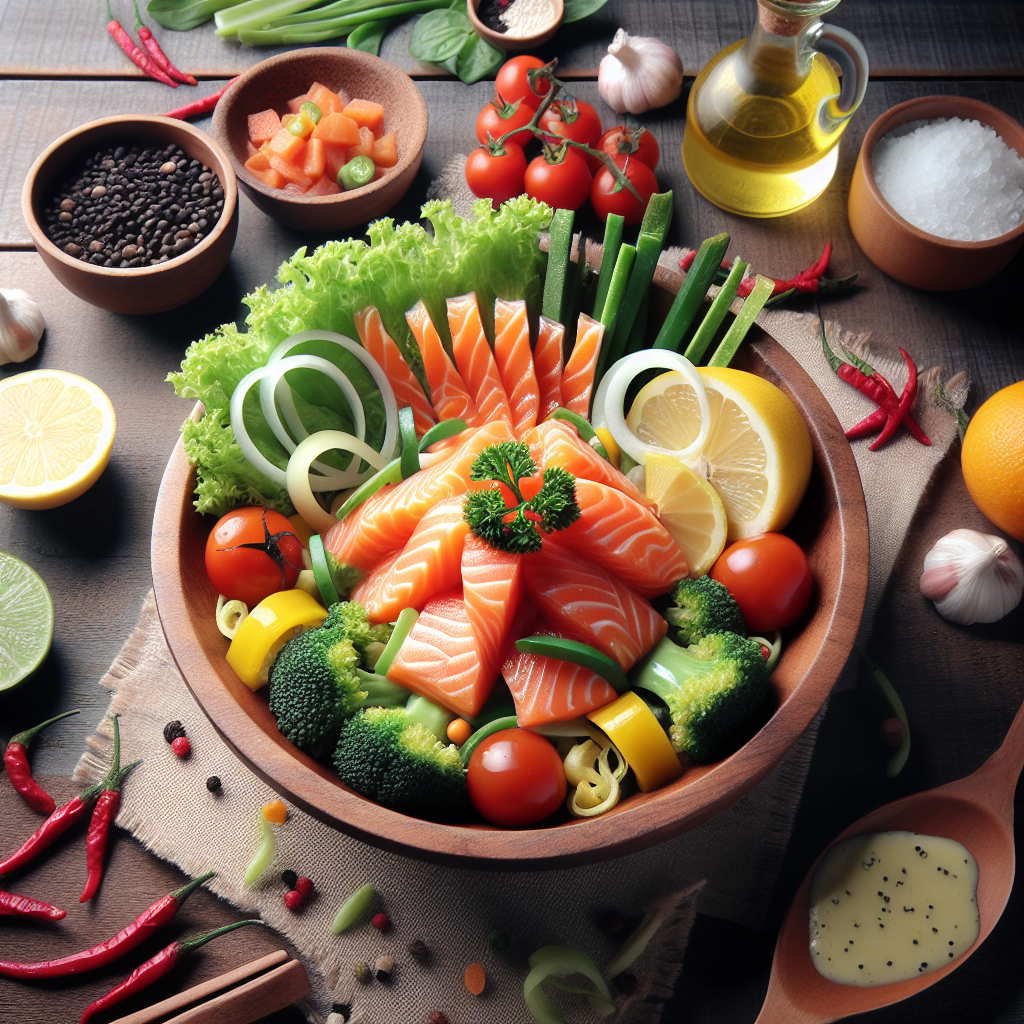-
Table of Contents
Introduction

When it comes to maintaining a healthy diet, finding delicious and nutritious recipes can be a challenge. However, in Indonesia, there is a traditional dish called “Karedok” that is not only tasty but also perfect for those who are on a diet. Karedok is a fresh vegetable salad that is packed with vitamins, minerals, and fiber. In this article, we will explore the benefits of Karedok for a diet and provide a simple and easy-to-follow recipe.
The Benefits of Karedok for a Diet
Karedok is a popular dish in Indonesia, especially in West Java. It is made from a variety of fresh vegetables such as cucumber, bean sprouts, long beans, cabbage, and basil leaves. These vegetables are not only low in calories but also high in fiber, which can help you feel full for longer periods of time. Additionally, Karedok is a great source of vitamins and minerals, including vitamin C, vitamin K, potassium, and iron.
1. Low in Calories
One of the main benefits of Karedok for a diet is its low calorie content. The vegetables used in Karedok are mostly water-based and have a low energy density. This means that you can eat a large portion of Karedok without consuming too many calories. For example, a serving of Karedok typically contains less than 100 calories, making it an excellent choice for those who are trying to lose weight.
2. High in Fiber
Fiber is an essential nutrient for a healthy diet. It helps regulate digestion, prevents constipation, and promotes a feeling of fullness. Karedok is rich in fiber, thanks to the variety of vegetables it contains. The bean sprouts and long beans in Karedok are particularly high in fiber, which can help you maintain a healthy weight and improve your overall digestive health.
3. Packed with Vitamins and Minerals
Karedok is not only low in calories and high in fiber but also packed with essential vitamins and minerals. The vegetables used in Karedok are rich in vitamin C, which is important for immune function and collagen production. They also contain vitamin K, which plays a crucial role in blood clotting and bone health. Additionally, Karedok provides potassium, which helps regulate blood pressure, and iron, which is essential for the production of red blood cells.
How to Make Karedok
Now that we understand the benefits of Karedok for a diet, let’s dive into a simple and easy-to-follow recipe:
Ingredients:
- 1 cucumber
- 100 grams of bean sprouts
- 100 grams of long beans
- 100 grams of cabbage
- 10 basil leaves
- 2 cloves of garlic
- 2 red chili peppers
- 1 tablespoon of tamarind paste
- 1 tablespoon of palm sugar
- Salt to taste
Instructions:
- Prepare the vegetables by washing them thoroughly.
- Thinly slice the cucumber, long beans, and cabbage.
- Crush the garlic cloves and red chili peppers.
- In a mortar and pestle, combine the crushed garlic, red chili peppers, tamarind paste, palm sugar, and salt. Grind until it forms a smooth paste.
- In a large mixing bowl, combine the sliced vegetables and basil leaves.
- Add the spice paste to the vegetables and mix well, ensuring that all the vegetables are coated.
- Let the Karedok sit for a few minutes to allow the flavors to meld together.
- Serve the Karedok chilled and enjoy!
Summary
Karedok is a fresh vegetable salad that is not only delicious but also perfect for those who are on a diet. It is low in calories, high in fiber, and packed with essential vitamins and minerals. The variety of vegetables used in Karedok provides a range of health benefits, including improved digestion, weight management, and enhanced immune function. By incorporating Karedok into your diet, you can enjoy a nutritious and satisfying meal that supports your overall health and well-being.
